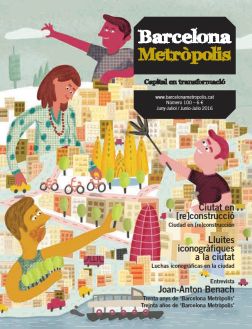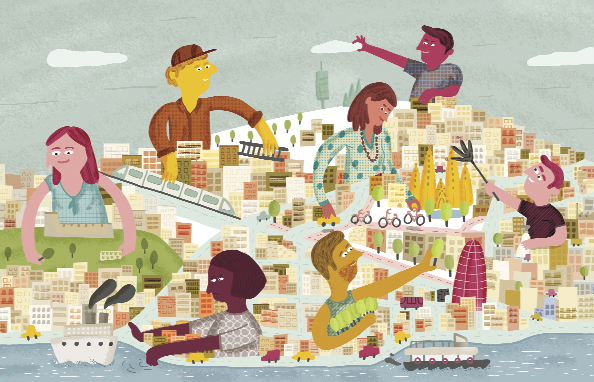Our magazine’s 30th anniversary and 100th issue have arrived at the same time. On this special occasion we invited writers and activists to tell us about their Barcelona, and they responded by offering their personal visions. In the process, they have also illuminated aspects of the city and uncovered layers that are not obvious at first glance.
Barcelona finds itself in a period of political change that that calls for bold proposals. At the same time, the broadening of the city’s political spectrum requires everyone to engage in dialogue to find common ground. As sociologist Joan Subirats says in the article that opens this issue, “the vitality of a city like Barcelona is measured more by the amount of conflict it can contain and manage rather than the hegemony of an equalising logic of consensus”.
Joan Subirats, M. Àngels Cabré, Kathrin Golda-Pongratz, Isabel Segura, Itziar González, Mery Cuesta, Maria Barbal, Javier Pérez Andújar and Enric Casasses explore a range of concerns with one common theme: finding the right fit between the city and citizens. Each of these writers, from their own perspective, offers reflections or proposals on how to manage competing interests within the public space.
Barcelona has to look after itself and its citizens. It also must manage public space in a way that ensures that the city’s streets are places of understanding and coexistence, places of participation that breed freedom and democracy – two concepts that do not always go hand-in-hand, as Itziar González points out in her piece.
Barcelona also needs to assume responsibility for its neighbourhoods and outlying metropolitan areas, and thus develop a more authentic and honest relationship with a reality that is just as Barcelonian as the city’s great icons of Modernism. Barcelona’s high ranking in international indices has helped turn it into an inevitable tourist city. Now is the time to focus on making it a habitable city.




